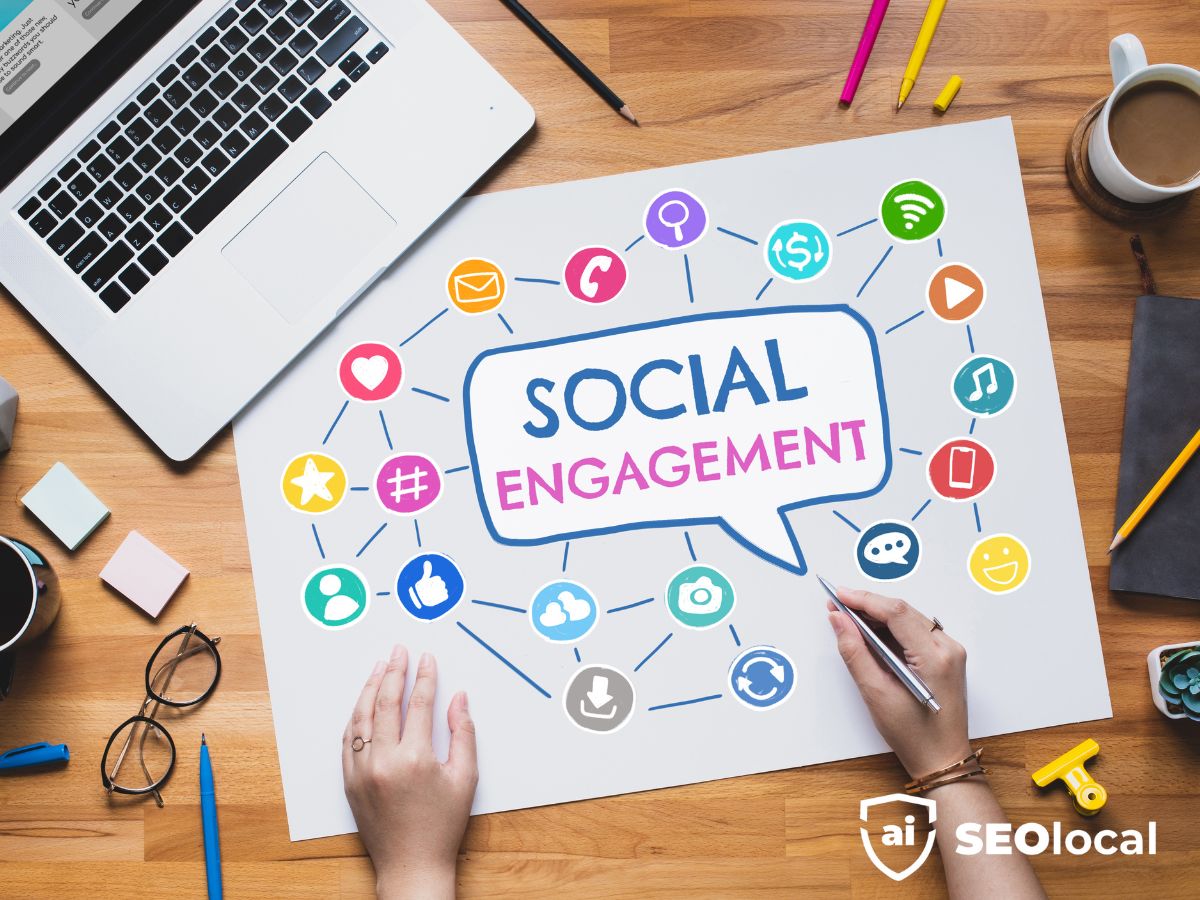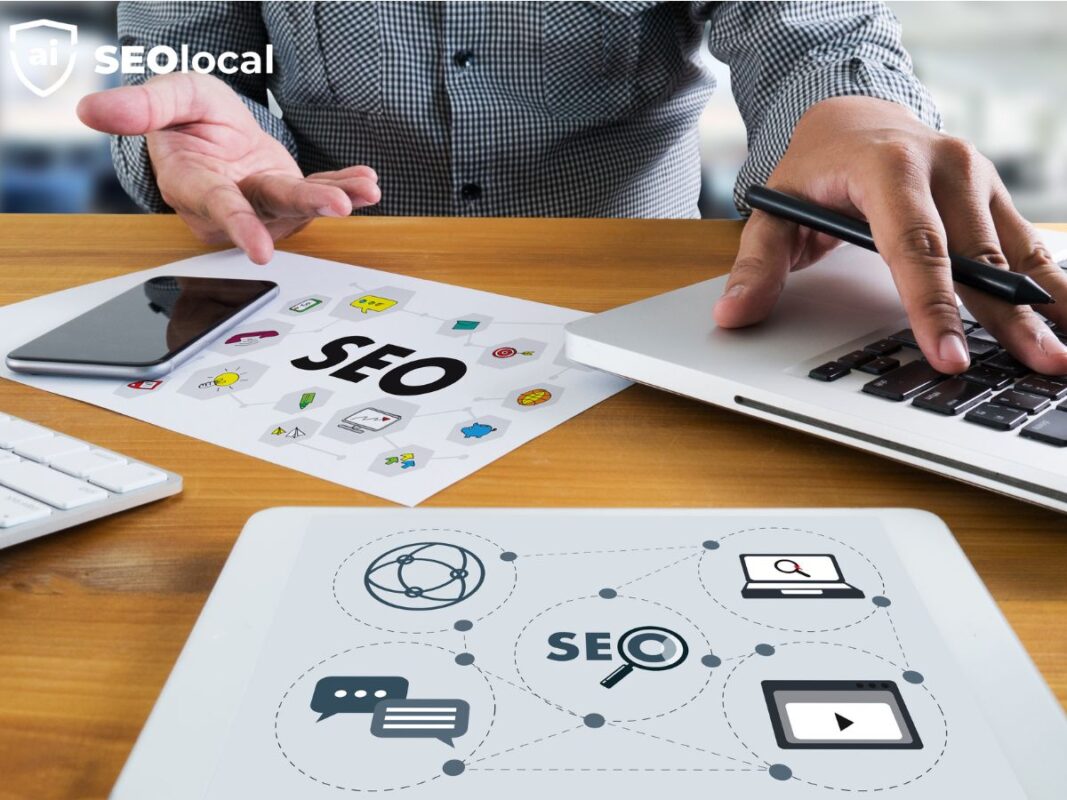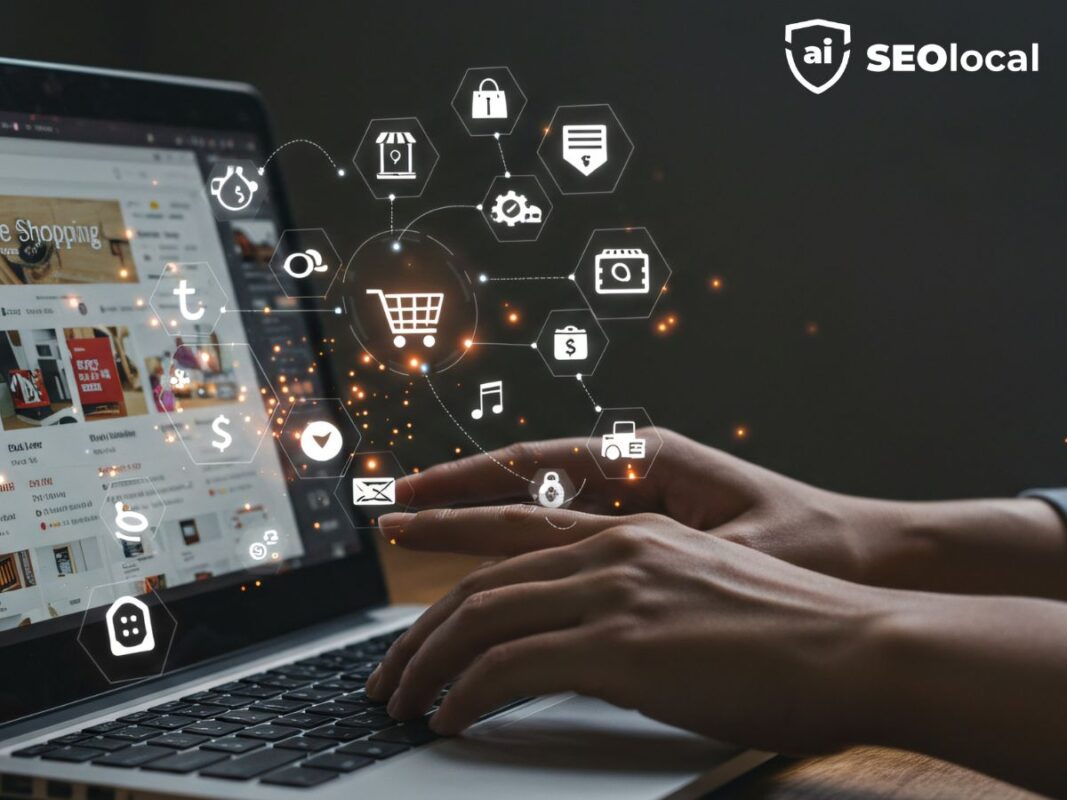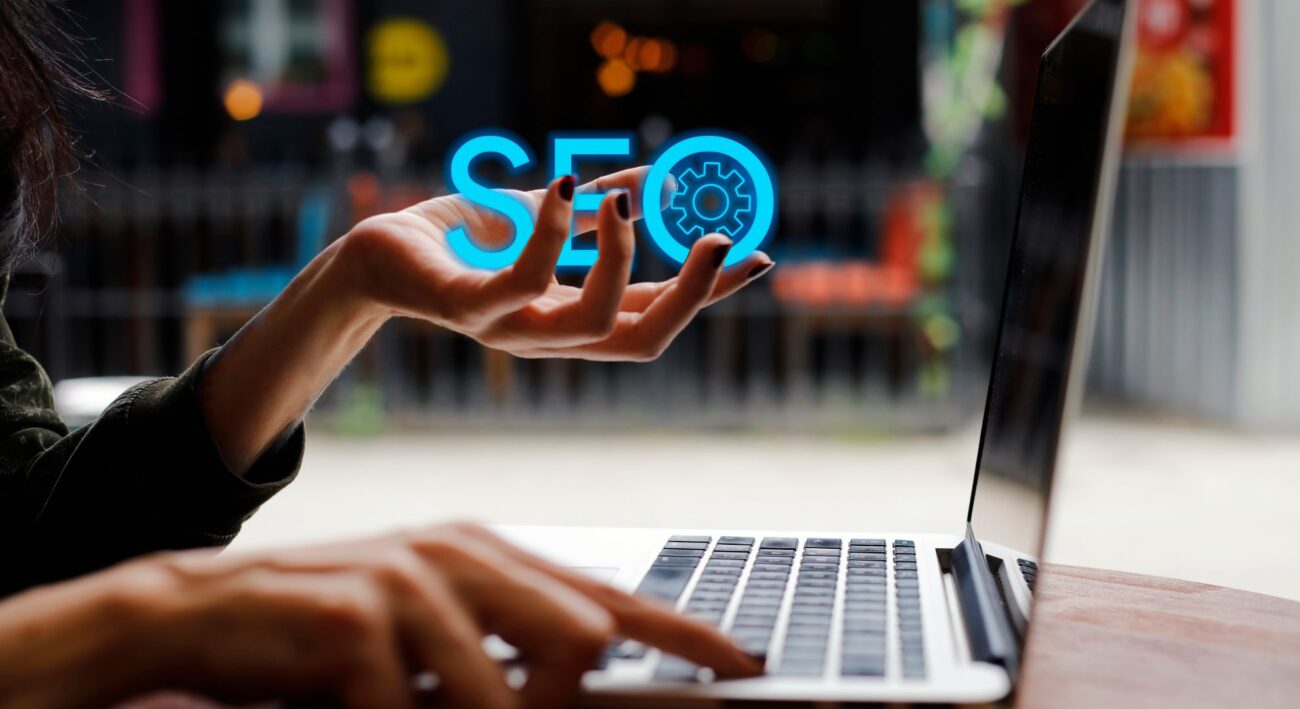- Advanced Local SEO Strategies
- Fundamentals of Local SEO
- Google Business Profile (GBP) Optimization
- Local Keywords and Content Strategy
- Local Link Building
- Local Paid Advertising
- Local Search Ranking Factors
- Local SEO Best Practices
- Local SEO Tools and Analytics
- Local Social Media Marketing
- Online Reviews and Reputation Management
- Technical SEO for Local Businesses
Boost In-Store Traffic with Local Social Media Campaigns Effectively

Nearly 9 out of 10 consumers who search for nearby businesses on their phones walk into a physical location within seven days. This isn’t just data—it’s proof that digital strategies directly shape real-world decisions. For businesses, this means your online presence isn’t optional; it’s the bridge between screens and your front door.
Traditional marketing casts a wide net, but local-focused efforts thrive on precision. Geographic targeting and community-driven content help you speak directly to neighbors, not strangers. Think events, partnerships, or hyper-relevant offers—the kind of details that make people say, “This place gets me.”
Success starts with research. What do nearby customers value? Which platforms do they use daily? Answering these questions helps craft messages that resonate. When done right, these efforts don’t just fill seats—they build relationships that keep people coming back.
Key Takeaways
- 88% of local smartphone searches lead to in-person store visits within a week
- Community-focused content drives stronger connections than generic ads
- Geographic targeting ensures your message reaches the right audience
- Audience research is critical for creating relevant campaigns
- Effective strategies increase visibility, loyalty, and sales over time
Understanding Your Local Audience for Enhanced In-Store Traffic
Your next loyal customer lives within five miles—but only if your content speaks directly to them. Successful strategies begin by decoding what makes your neighborhood unique. Start with simple questions: Where do people gather? What festivals define the area? These answers shape campaigns that feel personal, not generic.
Identifying Local Preferences and Demographics
Map your audience’s habits using free tools like Facebook Audience Insights. Look for patterns in age ranges, hobbies, and shopping behaviors. For example, families might prioritize weekend events, while young professionals engage more during lunch breaks.
Track these community indicators:
| Platform | Top Content Types | Peak Activity Times |
|---|---|---|
| Event posts, local news | Weekdays 7-9 PM | |
| Visual stories, polls | Weekends 11 AM-1 PM | |
| Nextdoor | Neighborhood updates | Mornings 7-8 AM |
Leveraging Geo-Targeted Insights
Platforms like Instagram and Google Ads let you filter audiences by ZIP code. Use this to test content variations. A coffee shop might promote breakfast specials to commuters at 7 AM, while highlighting cozy workspaces to remote workers at noon.
Watch local hashtags and trending topics. If pickleball dominates community conversations, create related offers. This cultural alignment builds trust—and turns casual browsers into regulars.
Boosting In-Store Traffic with Local Social Media Campaigns
The best customers might be just blocks away—if your message cuts through the noise. Location-based strategies turn casual scrollers into curious visitors by showing relevance through proximity.
Precision Targeting by Location
Platforms like Facebook Ads let you draw virtual boundaries around neighborhoods. A bakery could target morning commuters within 2 miles with croissant deals, while a hardware store might reach DIY enthusiasts across specific ZIP codes.

Follow this three-step approach:
- Set radius parameters matching your service area
- Align ad schedules with local routines (commute times, lunch breaks)
- Reference nearby landmarks in visuals
Tailoring Content to Micro-Audiences
Split your audience using platform tools. Parents might see weekend family bundles, while students receive study break specials. Track which groups click store directions versus menu pages to refine offers.
Analytics reveal patterns:
| Segment | Preferred Content | Visit Likelihood |
|---|---|---|
| New Residents | Welcome discounts | 68% |
| Repeat Customers | Loyalty perks | 82% |
Tools like Google Analytics connect online campaigns to physical visits. Notice spikes after sharing parking tips or showcasing staff favorites? Double down on what works.
Crafting Compelling Local Offers and Promotions
81% of shoppers say location-based discounts make them more likely to visit a business. This creates opportunities to design promotions that feel personal rather than transactional. Focus on what makes your neighborhood unique—seasonal traditions, school schedules, or cultural celebrations.
Designing Irresistible Local Deals
Create urgency through limited-time offers tied to community happenings. A bookstore near colleges might host author signings during finals week, while a gym could offer “New Neighbor” passes when apartments lease up. Use this framework:
| Promotion Type | Local Connection | Customer Response Rate |
|---|---|---|
| Event Partnerships | School carnivals | 74% |
| Seasonal Discounts | Harvest festivals | 68% |
| Community Challenges | Charity 5K races | 82% |
Optimizing Timing and Frequency
Align your marketing calendar with local rhythms. Post lunch specials when schools dismiss early. Send email reminders before rainy weekends if you sell umbrellas. Track these patterns:
- Peak store hours from POS data
- Community event schedules
- Weather trends affecting foot traffic
Utilizing Social Media for Local Content
Showcase customers wearing your products at town parades. Share staff volunteering at food drives. This builds trust better than generic ads. Rotate these content types weekly:
- Behind-the-scenes store prep videos
- Customer spotlight stories
- Live Q&As about local issues

Enhancing Engagement Through Interactive Content
Imagine turning casual scrollers into excited visitors through content that demands participation. Interactive formats transform viewers into collaborators, creating memorable experiences that drive real-world actions. This approach builds deeper connections than standard posts—your audience becomes part of the story.
Leveraging Live Streaming and Videos
Real-time video creates urgency and authenticity. Host live product demos where viewers request specific features or ask questions. Show your team preparing for a local event or share customer testimonials on camera.
Streams let you answer questions as they pop up, building trust through transparency. Record these sessions for later use—turn key moments into short clips highlighting your brand’s personality.
Incorporating Polls, Quizzes, and Contests
Quick polls reveal what your community wants. Ask about preferred product colors or event themes. Quizzes educate while entertaining—try “Which Seasonal Item Matches Your Lifestyle?”
Contests encourage user-generated content. Request photos of customers using your products locally. Feature entries in your feed to strengthen community ties.
| Content Type | Engagement Boost | Insight Gained |
|---|---|---|
| Live Q&A | 42% longer watch time | Common customer concerns |
| Polls | 3x more comments | Product preferences |
| Photo Contests | 58% sharing rate | Local usage scenarios |
Free tools like Instagram Stories and Canva simplify content creation. Schedule weekly interactive posts to maintain momentum without draining resources. Consistent efforts turn followers into advocates who bring friends through your doors.
Integrating Digital Strategies with In-Store Campaigns
Your customers toggle between screens and sidewalks daily—smart integration turns this habit into store visits. Align digital efforts with physical experiences to create journeys where each touchpoint feels connected. This synergy makes your brand memorable across platforms.
Bridging Online and Offline Experiences
QR codes placed in windows can unlock digital menus or limited-time offers. Run promotions where social media followers get early access to in-store sales. Digital loyalty programs reward both online engagement and physical purchases.
Sync your content calendar with shelf displays. If you’re promoting beach gear online, create matching window arrangements. Train staff to reference current social campaigns during checkout conversations.
Measuring Foot Traffic with Data-Driven Tools
Track how many people enter after clicking “Get Directions” on ads. Compare peak visit times with your busiest social posting hours. Look for patterns like increased weekend traffic following Friday email blasts.
Use anonymous mobile signals to see which neighborhoods respond best to specific campaigns. Adjust promotions based on weather trends or local event schedules. This data helps refine both digital outreach and in-store stock levels.
Connect with SEO Local
Growing your neighborhood presence requires more than guesswork. SEO Local combines data-driven strategies with hands-on experience to help retailers stand out in crowded markets. Their team specializes in crafting campaigns that convert online engagement into real store visits.
Small businesses often struggle against big-box competitors. SEO Local levels the playing field through hyper-targeted approaches. They analyze your unique challenges, from customer demographics to nearby influencer partnerships, creating solutions tailored to your location.
Contact Us
Get same-day answers about optimizing your social media efforts. Their experts help you:
- Identify untapped opportunities in local search trends
- Develop conversion-focused content for multiple platforms
- Track campaign performance through customized dashboards
Retailers using their services see 3x faster growth compared to DIY approaches. A recent case study showed boutique stores increasing weekend foot traffic by 41% within eight weeks through geo-targeted influencer collaborations.
| Challenge | SEO Local Solution | Average Results |
|---|---|---|
| Low visibility | Location-based ad optimization | +58% store searches |
| High competition | Competitor gap analysis | 22% cost reduction |
| Limited budget | ROI-focused strategies | 3:1 return ratio |
Their collaborative process keeps you informed at every stage while handling technical complexities. Whether you’re launching a new location or revitalizing existing stores, immediate WhatsApp support ensures quick adjustments to maximize success.
Conclusion
Effective localized marketing bridges digital efforts and real-world results. When businesses align strategies with community needs, they see measurable impacts—like the 193% sales lift from targeted promotions. This approach turns casual browsers into loyal customers through relevance and timing.
Success starts by understanding neighborhood preferences. Geo-targeted content and event-based offers turn online interest into store visits. But it doesn’t stop there. Interactive elements like polls or live streams keep customers engaged beyond initial clicks.
Pair these with in-store experiences that mirror digital campaigns for cohesive brand storytelling. Retailers who adapt maintain relevance in competitive markets. Regular performance reviews help refine tactics as consumer behaviors shift.
Building authentic connections through localized efforts creates lasting advantages. It’s not just about immediate traffic—it’s cultivating a community that supports your business long-term. The right mix of data-driven planning and genuine engagement makes all the difference.
FAQ
How can geo-targeted ads increase foot traffic to my store?
Geo-targeted ads let you focus your budget on users within a specific radius of your location. Platforms like Facebook and Instagram allow you to show promotions, events, or discounts only to people near your store, encouraging them to visit.
What types of local content perform best on social media?
Behind-the-scenes videos, customer testimonials, and posts highlighting nearby landmarks or community events resonate well. For example, showcasing how your products tie into local culture or holidays can build relevance and urgency.
How do I measure if my campaigns are driving actual visits?
Use tools like Google Analytics foot traffic reports, Facebook’s “Store Visits” metric, or location-based check-ins. Pair these with promo codes or QR codes exclusive to social campaigns to track offline conversions.
Why should I collaborate with local influencers?
Influencers with hyperlocal followings add credibility and expand your reach. For instance, a neighborhood food blogger hosting a live tasting event at your café can attract their engaged audience to your physical location.
How often should I post promotions to avoid overwhelming followers?
Aim for 2-3 posts per week highlighting deals, mixed with non-promotional content like tips or user-generated posts. Time-limited offers (e.g., “24-hour flash sales”) create urgency without oversaturating feeds.
Can contests or quizzes really boost in-store engagement?
Yes. For example, a “tag a friend” giveaway requiring winners to pick up prizes in-store drives foot traffic. Quizzes about local trivia with discounts for participants can also funnel online interactions into visits.
What’s the fastest way to bridge online campaigns with offline sales?
Use clickable CTAs like “Shop Now” buttons linked to maps or directions. Promote in-store exclusives (e.g., “Online followers get 10% off when they mention this post”) to merge digital interest with physical visits.
How does SEO Local assist with location-based marketing strategies?
We analyze your local market trends, optimize geo-targeted ad campaigns, and provide tools to track real-time results. For example, we’ll help you run Instagram Stories ads targeting users within 5 miles of your store during peak hours.



